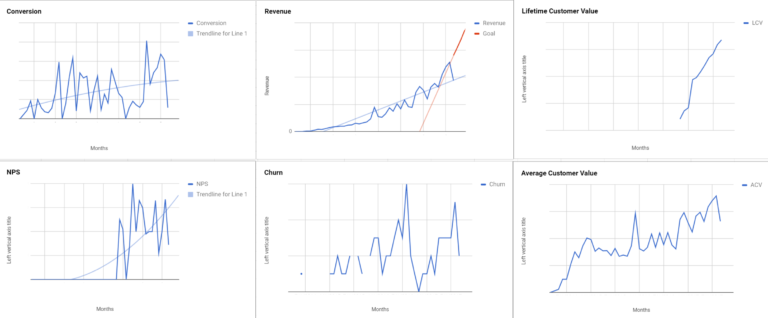This is the fifth post in a series about Lean Startup on elmah.io. Check out the other posts here:
Tech nerds loves metrics, right? I often hear people saying, that you should select 2-5 KPIs and stick with those. They are probably right in some way or form, but I’m all about the numbers. I follow up on the statistics for elmah.io monthly. I’m using a simple Google spreadsheet where I input a lot of metrics manually.
I collect everything from website visits to numbers of downloads of the elmah.io NuGet packages. While that sounds like a nightmare to maintain, doing it monthly actually don’t take much more than ½ hour of my time every month. Obviously, the approach doesn’t scale if I want to start following up more frequently. I’ve looked at tools like Baremetrics and ChartMogul. But for now, it is a manual process.

To help collect numbers, I’m using a combination of tools like Google Analytics, AdWords, Intercom, Paymill and a homemade console app for calculating lifetime customer value (LCF), customer acquisition cost, and more mandatory SaaS metrics.
An important part of Lean Startup is the build-measure-learn loop. While build-measure learn relates more to some of the other posts (like MVP and Pivot), I’ve included it in this post, since metrics is a great part of this loop. When developing new features using the thoughts from MVP, I usually follow up using a combination of Google Analytics and a homemade feature dashboard. I use Serilog and Elasticsearch internally on elmah.io, to collect all sorts of metrics around the product. Logging a message through Serilog every time an email of a specific type is sent, when an uptime check is scheduled or a feature on the UI is used, makes it possible for me to create highly specialized dashboards in Kibana. That way I have the perfect overview of how much each feature is used, if the feature constantly throws errors, etc. Feature dashboards is something I really recommend, especially during the MVP/beta phase. While I keep the dashboards around, the new feature dashboards typically shrink into smaller changes on a range of overall surveillance dashboards I have created for monitoring purposes.
A final note about using Elasticsearch and Serilog. When I tell people, I’m often asked why I’m not eating my own dog food and using elmah.io to monitor elmah.io. The short answer: I am. The longer answer: elmah.io isn’t a platform for storing metrics, logging structured log messages and creating feature dashboards on the fly. I use elmah.io to implement a successful error management process around hosting elmah.io and Serilog/Elasticsearch/Kibana for the rest. A downside of using your own software is, that if elmah.io goes down, there’s no elmah.io to tell me that the service went down 🙂
